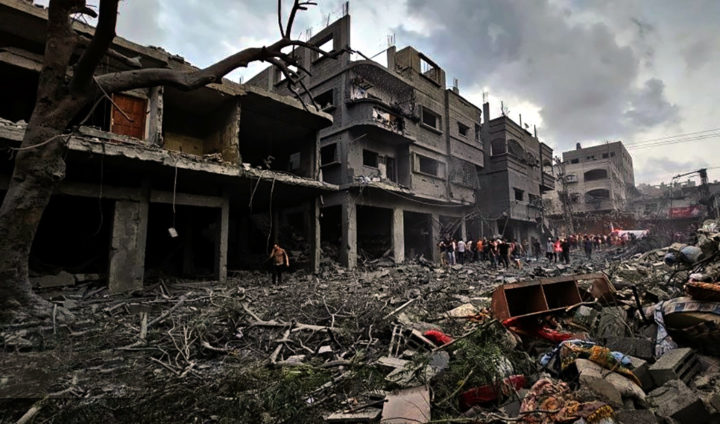The Gaza Strip lies in devastation. Where towering apartment blocks once stood, there are now hills of rubble, and pools of sewage-contaminated water are spreading disease. The streets have been churned into dirt-filled canyons, and the air is thick with the stench of bodies still trapped beneath the debris.
Israel’s year-long offensive, one of the deadliest in recent history, has claimed over 41,000 lives, with more than half being women and children, according to local health officials. With no clear resolution in sight and no plan for the aftermath, Gaza’s future remains bleak. The prospect of rebuilding seems distant and uncertain.
Even when the fighting eventually ceases, hundreds of thousands are likely to endure life in overcrowded tent camps for years. Experts predict that the process of reconstruction could take decades. The scale of the destruction is overwhelming. According to UN reports, nearly a quarter of Gaza’s structures have been obliterated, with around 66% suffering at least some damage. The aftermath is comparable to some of the worst-hit areas in Ukraine, yet Gaza, a much smaller territory, has borne the brunt of this relentless conflict. With almost 90% of its 2.3 million residents displaced, the humanitarian crisis is staggering.

The war has ravaged more than just homes. Essential infrastructure, including Gaza’s water and sanitation systems, has collapsed, leaving streets flooded with sewage and disease rampant. The UN estimates that Gaza now faces 40 million tonnes of debris and rubble, requiring years and substantial funds to clear, while the majority of the population faces poverty, unemployment, and dire living conditions. The path to recovery is long, with countless obstacles ahead.
Rebuilding Gaza
Arab nations, including Saudi Arabia and the United Arab Emirates, have expressed that they will only contribute to Gaza’s reconstruction if a postwar settlement paves the way for a Palestinian state. However, Israeli Prime Minister Benjamin Netanyahu has rejected such proposals, stating that neither Hamas nor the Palestinian Authority will govern Gaza. He insists Israel will retain indefinite security control, with local Palestinians managing civilian affairs, although no volunteers have come forward, and Hamas has threatened retaliation against anyone cooperating with the occupation.
Rebuilding Gaza would require importing large quantities of construction materials and equipment, which Israel is unlikely to permit due to fears that ‘Hamas could use them to rebuild its military infrastructure’. Despite claims from the Israeli military that they do not restrict civilian supplies, severe limitations remain on items that could serve dual civilian and military purposes. Under previous reconstruction agreements, such materials were heavily regulated, with delays. The Shelter Cluster estimates it could take 40 years to rebuild Gaza’s destroyed homes under these conditions, while aid agencies currently struggle just to provide basic shelter.







